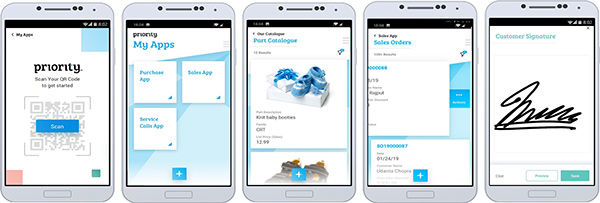If you’re overseeing a financial ERP implementation, upgrade, or reengineering project, you’ve probably noticed a motif among the industry analysis. The top research firms advise you to think in terms of short-term versus long-term system goals. Between innovation and differentiation. Strategic advantage versus stable system of record. On top of all that, you’re faced with technical differences between platforms. Cloud versus on-premise. Hybrids thereof. Related, but not synonymous, are differences in software delivery. SaaS versus merely hosted, for instance. Quite a Venn diagram and it’s all important. It’s also a lot to keep in one’s mind, especially if your native field is not IT.

Whether you’re entrenched in the implementation team or observing from the distance of the steering committee, do keep in mind industry trends and topics. These are crucial aspects of today’s ERP. But in the process, don’t discount what you already know.
Here are some questions about financial ERP functionality. Not technical architecture. Not the particular software vendor. Functionality – what can the system do, and what do you make sure it cannot do. Consider the following to be a simple health-check of your financial ERP system. To the extent you can answer in the affirmative to these familiar questions, your system is on the right track.
General Ledger
- Can you produce your income statement and balance sheet using only the Natural Account in your chart of accounts?
- At month-end, can you close and reconcile within three days?
- Does the system produce reports for you that identify reconciling items between GL activity and those in the feeder systems?
- Does your GL automate the elimination journal entries needed for consolidation?
- Does your GL automate foreign currency gain and loss recognitions, along with translation and revaluation?
- Does your general ledger meet statutory reporting requirements in addition to those of GAAP and IFRS?
- Does your general ledger automate the periodic allocation of fixed costs to other entities?
- Does your general ledger come with an excel-based reporting add-in which allows financial analysts to not only produce reports, but drill all the way from financial line items to individual invoice lines?
Fixed Assets
- Does your fixed asset system automatically create assets based on expenditures through your AP or GL system?
- Does your fixed asset system track physical location and custody of your assets along with depreciation? Or do you have to track the physical attributes elsewhere?
- When you transfer an asset between legal entities, does your system maintain a full, reportable trail of where the asset started and where it went? What about when there are multiple transfers to the same asset?
- Can your asset system maintain, for a single asset, different cost basis, useful life, and depreciation rules such as different books for corporate reporting, US Federal Tax, State Tax, ACE, AMT, statutory and so on?
- When it is time to file tax returns, is your tax department able to use reports directly out of the system, or must they adjust the data in excel before filing?
- Does your fixed asset system produce a monthly roll-forward of both cost and accumulated depreciation?
Payables
- Does your AP system store electronic images of your vendor invoices? Or, at least, can you link directly from the online record of the vendor invoice to the electronic image in some other system?
- Does your AP system implement the preventive control known as three-way matching?
- Are at least eighty percent of your match exceptions informative and actionable? Examples would be price variances between PO line, receipt line, and invoice line. Or Missing PO. Or missing receipt. Some exceptions are more general and require heuristic analysis to figure out, such as when a purchase order is somehow changed while the vendor invoice is still being matched. If more than twenty percent of match exceptions require analysis to even figure out what’s wrong, then the system isn’t serving you very well.
- At least eighty percent of the time, are purchase orders and receipts entered prior to the vendor invoice being received? Receipts or purchase orders entered after the vendor invoice are often based on the vendor invoice itself. In which case, anyone relying on the three-way-match as a preventive control is fooling themselves.
- Can your AP system produce 1099s at year end out of the box?
- Does your AP system implement the preventive control known as positive pay?
- Does your AP system take advantage of timing-based discounts when it schedules payments?
Receivables
- Does your system allow AR specialist to see, in one single screen, the customer’s account balance and payment history.
- Are customer records set up at the correct granularity to call on and collect those accounts?
- Can you reprint invoice copies from your AR system in five clicks or less?
- Does the system produce standard aging metrics for you? DSO? CEI?
- Can you run a monthly AR roll forward report out of the system?
- Does your system allow you to run an aging report as of any past date or future date?
- Does your AR system allow you to configure the buckets on your aging report without the need to reprogram?
By all means, consider technical trends and heed the advice of your IT counterparts. The right strategy carries great opportunity. In the process, just don’t lose site of the tactical functionality that matters to you as a finance professional and to your organization. It is the stuff you already know. It is the reason to implement ERP in the first place.






